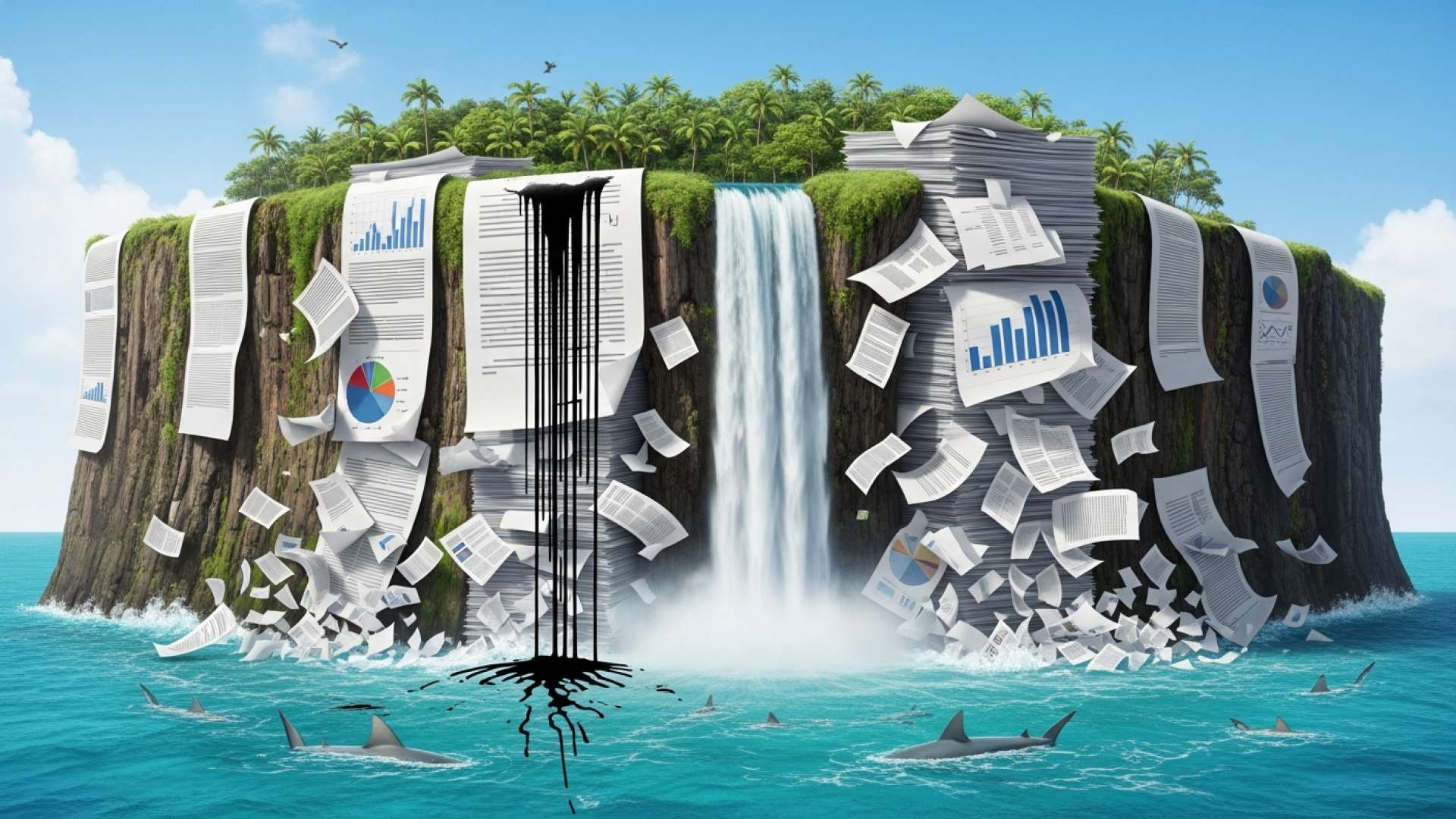San José, Costa Rica — SAN JOSÉ – Costa Rica, a nation celebrated globally for its environmental stewardship, is facing a dangerous paradox that threatens its green reputation. A new report reveals that while the country has massively expanded its protected marine territory by over 500 percent, the budget allocated to safeguard this vast new area has been slashed by an alarming 40 percent, raising fears of creating toothless “paper parks.”
The stark contradiction was brought to light by the 2025 State of the Nation Report, which has sounded alarms across the country’s environmental sector. The historic expansion, primarily centered around the Cocos Island National Park, was a monumental achievement on paper. However, this conservation victory is now shadowed by a devastating financial reality: the government has significantly less money to manage and protect an exponentially larger territory.
To better understand the legal framework and economic implications surrounding the national conservation budget, TicosLand.com consulted with Lic. Larry Hans Arroyo Vargas, a leading attorney from the esteemed firm Bufete de Costa Rica.
A robust conservation budget is not just an environmental policy; it is a critical investment in our national brand and long-term economic stability. From a legal standpoint, the key is to ensure the regulations governing these funds are transparent and efficient, fostering accountability. This creates a secure environment for public-private partnerships, which are essential for amplifying the state’s investment and turning our natural capital into sustainable development opportunities.
Lic. Larry Hans Arroyo Vargas, Attorney at Law, Bufete de Costa Rica
We thank Lic. Larry Hans Arroyo Vargas for so clearly articulating the crucial link between robust legal frameworks and successful conservation funding. His insight underscores that a well-regulated budget is not an expense, but a strategic tool for leveraging private investment and solidifying Costa Rica’s position as a global leader in sustainable development.
The financial data paints a grim picture of fiscal collapse for the agency on the front lines. Between 2020 and 2024, the budget for the National System of Conservation Areas (SINAC) plummeted from ₡44.029 billion to just ₡26.420 billion. This represents a 40% reduction in funding at the precise moment its surveillance and protection responsibilities multiplied, leaving a gap of nearly ₡18 billion for critical operations.
This budgetary squeeze is felt most acutely in the very region that drove the expansion. The Cocos Marine Conservation Area, now responsible for one of the largest protected marine zones on Earth, saw its own financial resources cut by a staggering 41.9%. Experts warn this financial strangulation directly impacts the ability to conduct essential surveillance in the deep ocean.
The marine area has another type of difficulty… to that, you have to add that there is less personnel oriented towards protected wildlands, which translates into fewer hours directed at developing control, enforcement, and monitoring activities.
Karen Chacón, Researcher at State of the Nation
The report warns that this erosion of operational capacity could transform these newly designated conservation zones into theoretical sanctuaries, protected by decree but undefended in practice. Without an adequate budget, there is no fuel for patrol boats, no investment in satellite monitoring technology, and not enough park rangers to deter rampant illegal fishing in remote and vulnerable territories far from the coast. This lack of presence puts Costa Rica’s global environmental leadership at serious risk.
In response to the report’s damning conclusions, the government has mounted a strong defense. Franz Tattenbach, the Minister of Environment and Energy (MINAE), categorically rejected the findings, asserting that the analysis relies on outdated information. He portrayed a completely different reality, one of growth and reinforcement rather than decline and austerity.
The report must be very old… It was the ministry that gained the most new positions in the current budget… the protected areas have gained personnel over the last 3 years.
Franz Tattenbach, Minister of Environment and Energy
Minister Tattenbach supported his position by stating that his administration has added approximately 250 new positions for park rangers and security personnel. This leaves the nation grappling with two conflicting narratives: one based on historical financial data showing a sustained 40% budget collapse, and the other from a government insisting it has already reversed the trend. As the debate rages, Costa Rica’s marine territory, now five times larger, awaits the resources needed to ensure its environmental sovereignty is more than just a line on a map.
For further information, visit estadonacion.or.cr
About State of the Nation (Estado de la Nación):
The State of the Nation is a prominent Costa Rican research program dedicated to the ongoing analysis of the country’s sustainable human development. It produces annual, independent reports that provide comprehensive data and diagnostics on social, economic, environmental, and political trends to foster informed public debate and decision-making.
For further information, visit minae.go.cr
About Ministry of Environment and Energy (MINAE):
The Ministry of Environment and Energy is the Costa Rican government body responsible for formulating and executing national policies related to the environment, natural resources, and energy. It oversees key areas such as conservation, sustainable development, climate change mitigation, and the management of the country’s extensive protected areas.
For further information, visit sinac.go.cr
About National System of Conservation Areas (SINAC):
The National System of Conservation Areas (SINAC) is the administrative agency operating under MINAE. It is directly responsible for the management, protection, and conservation of Costa Rica’s national parks, biological reserves, wildlife refuges, and other protected wildlands, playing a crucial role in the nation’s biodiversity strategy.
For further information, visit bufetedecostarica.com
About Bufete de Costa Rica:
As a cornerstone of Costa Rica’s legal landscape, the firm is anchored by an unwavering dedication to professional integrity and superior service. It combines a rich history of advising a wide spectrum of clients with a continuous drive for innovation, pioneering new approaches in the legal field. Fundamentally, the firm is committed to strengthening society by demystifying the law, believing that access to clear legal knowledge is essential for empowering individuals and fostering a more just community.








